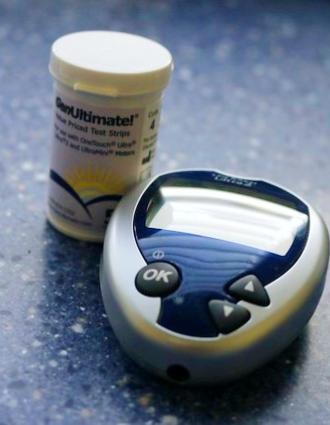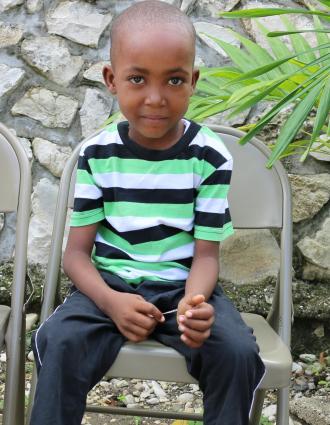Story
Diabetes in Haiti: Villerta's Story
Vilerta Lorvil is a 46-year-old mother of four from the town of L’Asile, who has lived with diabetes for many years.
Her condition was well controlled when she lived in Port-au-Prince and was able to go to a clinic regularly to have her blood sugar tested and receive medications. However, when her ex-husband left the family, and Vilerta was left to care for their four children on her own, her circumstances changed dramatically. The family moved to L’Asile, a small mountainous community in southern Haiti, and Vilerta was no longer able to get the care she needed to keep her diabetes in check, and her diet suffered as well. Vilerta explains, “I was not able to take care of myself, and be careful about the foods I ate, as well when I came to the South. And, when I went to seek help from a health center near my home there was no specialist there who could provide me with a good quality of care.”
My blood sugar levels got very bad until eventually a clinic near my home referred me to St. Boniface Hospital because no one else could help me.
Vilerta Lorvil
By the time Vilerta arrived at SBH her diabetes had been uncontrolled for a long time, and she had developed Peripheral Artery Disease, a common effect of uncontrolled high blood sugar. PAD commonly affects the lower leg and feet of patients with uncontrolled diabetes and can lead to a loss of feeling in the limb, and wounds that cannot heal due to poor blood circulation.
When this condition is very advanced it becomes life-threatening, and the only solution is to amputate the affected foot or leg. Sadly, in Vilerta’s case, her diabetes had been unchecked for so long that by the time she came to St. Boniface her left leg was seriously infected, and needed to be amputated.
Being faced with the prospect of losing a limb is traumatic for anyone, and especially in a country where accommodations and support for people living with disabilities or limited mobility are nearly non-existent. Vilerta remembers her initial reaction to being told that amputation was the only way to save her life: “I wanted to die, I felt so desperate because I did not see myself living without a leg. I could not imagine it.” However, with counseling from SBH staff, Vilerta began to see that there could be life beyond the amputation. “They gave me resilience,” she says, “They made me feel ready for my new life.”
After Vilerta’s successful surgery the team at SBH referred her to a rehabilitation clinic in Les Cayes, about an hour from her home, where she could be fitted for a prosthetic that would allow her nearly normal mobility around her home and community. The Tous Ensemble clinic, run by FONTEN, provides physical therapy and rehabilitation services, and they are one of the few sources of prosthetics for people living in Southern Haiti.
Within hours of having her new prosthetic fitted, Vilerta was up and dancing with joy. It takes most patients weeks or months to adjust to walking with a prosthetic, so the team was surprised and thrilled at how quickly Vilerta was up on her feet—and not just standing, but dancing!
Now that she is healthy, and has her prosthetic and crutches to help with her mobility over rough ground, Vilerta says she feels hope for the first time in a long time. “I feel ready for my new life.”


